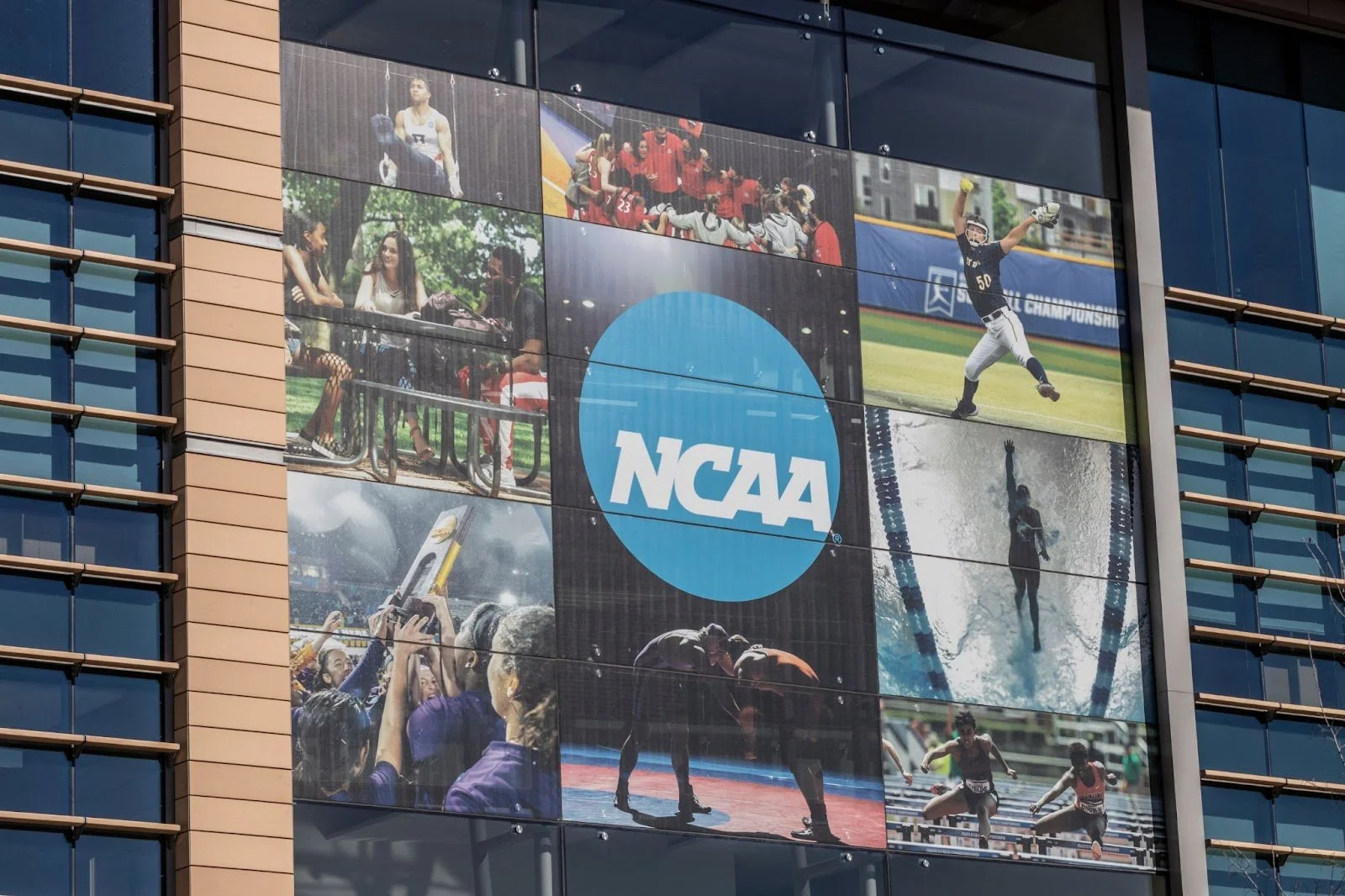The Sports Law team at HBC is writing a series of articles in response to the NCAA Transformation Committee’s recommendations to modernize DI athletics. This is the second article of the series.
NCAA Transformation Committee: Care of Student-Athletes
Previously, we looked at the makeup of the NCAA Transformation Committee (“Committee”), its background, and its objectives. Today’s post, the second in our series on the Committee and its recent report on modernizing NCAA Division I athletics, focuses on the Committee’s first objective: improving the physical and mental health of student-athletes.
Supporting the Mental and Physical Health of Student-Athletes
To enhance physical and mental health, the Committee recommends that, as a condition of participating in Division I athletics, institutions must provide specific levels of care to student-athletes. The most noteworthy recommendations include the following:
1. Cardiac Care Best Practices
The Committee’s recommended cardiac care protocols would ensure that all athletic staff are properly trained on cardiac care and warning signs, and would require student-athletes to undergo a cardiac pre-screening and family history check prior to competing at the Division I level.
Cardiac care has received a lot of attention lately after NFL player Damar Hamlin suffered a cardiac arrest during a nationally televised Monday Night Football game. After millions watched athletic trainers save Hamlin’s life in real-time, it is clear that basic cardiac care is essential to protect the lives and safety of all Division I student-athletes, and there is no excuse for institutions to fail to comply with this proposed requirement.
2. Interassociation Mental Health Best Practices
The Committee’s recommendations to promote student-athlete mental health include procedures for identifying mental health issues, referring student-athletes to qualified practitioners, conducting mental health screenings before a student-athlete starts their college career, and creating an environment that is supportive of mental well-being throughout Division I athletics.
Survey data shows that mental health is a priority for Division I student-athletes. The combination of collegiate study and high-level athletic competition creates intense stress and time demands on student-athletes, and the NCAA is long overdue on prioritizing these kinds of mental-health initiatives. The adoption of the Committee’s minimum mental-health protocols would be a big step in the right direction for student-athletes, and it is hard to imagine any resistance to those protocols from member institutions.
3. NCAA Concussion Safety Protocols
In recent years, few issues have been more important to athletes than concussions. The Committee’s recommended concussion protocols would improve and standardize concussion care throughout Division I athletics by requiring student-athletes to undergo pre-screenings, and to follow post-concussion management plans before returning to competition and/or class.
In the fall of 2022, Alana Gee, the widow of former USC linebacker Matthew Gee, filed a lawsuit alleging that the NCAA was responsible for the concussions that led to Matthew’s death in 2018. A similar lawsuit is currently pending against the NCAA for the death of former Grand Valley State University quarterback Cullen Finnerty. Given this landscape and our increased knowledge of the dangers of concussions, the NCAA and its member institutions have an obligation to protect student-athletes. Accordingly, we think the NCAA should, at a bare minimum, adopt the Committee’s recommended concussion protocols.
There is no doubt that requiring Division I institutions to comply with these protocols will increase costs for athletic departments. However, it is long past due that the NCAA formalizes and standardizes policies to improve the overall well-being of student-athletes. We are hopeful that each of these protocols will be adopted in short-order, and without resistance. Further, we hope that these measures are one of many steps that will be taken to improve the lives of student-athletes.
Stay tuned tohttps://www.hbcboulder.com/news-media (orhttps://twitter.com/HBCSportsLaw orhttps://www.linkedin.com/company/hutchinson-black-and-cook-llc/) for the latest in our series on the NCAA’s recommendations.
